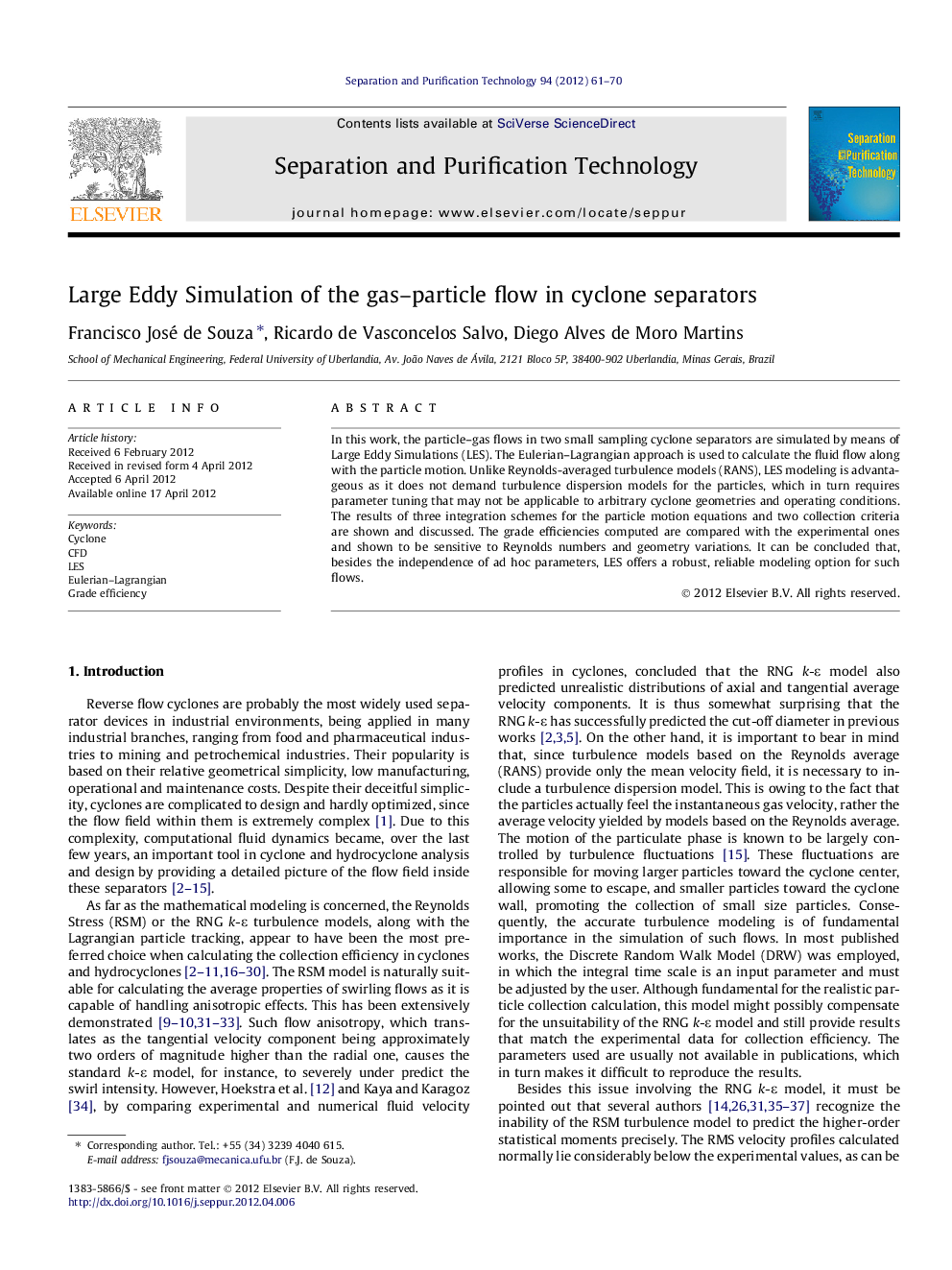| Article ID | Journal | Published Year | Pages | File Type |
|---|---|---|---|---|
| 642229 | Separation and Purification Technology | 2012 | 10 Pages |
In this work, the particle–gas flows in two small sampling cyclone separators are simulated by means of Large Eddy Simulations (LES). The Eulerian–Lagrangian approach is used to calculate the fluid flow along with the particle motion. Unlike Reynolds-averaged turbulence models (RANS), LES modeling is advantageous as it does not demand turbulence dispersion models for the particles, which in turn requires parameter tuning that may not be applicable to arbitrary cyclone geometries and operating conditions. The results of three integration schemes for the particle motion equations and two collection criteria are shown and discussed. The grade efficiencies computed are compared with the experimental ones and shown to be sensitive to Reynolds numbers and geometry variations. It can be concluded that, besides the independence of ad hoc parameters, LES offers a robust, reliable modeling option for such flows.
► Collection criteria based on escaping particles yield unrealistic grade efficiency. ► A collection criterion based on particles touching the bottom wall provides coherent results. ► The analytic and trapezoidal schemes for the particle integration provide similar results. ►LES with the dynamic Smagorinsky model provides reliable results for gas–solid flows in cyclones. ► Accurate prediction of the grade efficiency curve depends on both the mean and instantaneous flow.
